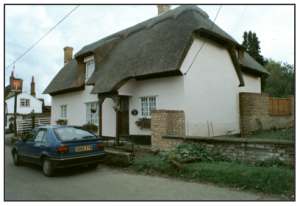| Listed Building Consent – Who Needs
It? Central
Government lists buildings of Special Architectural or Historic
Interest to protect them as part of the nations’ heritage.
This is done for the enjoyment and education of the population
now and for future generations. The buildings are selected
because they represent survival of past architectural styles
and  types
of construction. types
of construction. Listing
is not meant to prevent alteration or change, but to protect
buildings from insensitive alterations or extensions that
may dramatically alter the history, fabric or special appeal
of the building. What is it that
is listed? The
whole of the building is Listed, whatever its Grade. This
includes any extensions, whatever their age. The inside of
a Listed Building is protected as well as the outside. Other
buildings on the site and any walls are also protected, if
they were built before 1st July1948. What type of
work needs Listed Building Consent? Listed
Building Consent is needed before carrying our any works that
will affect the historical or architectural character of a
Listed Building. This could include: •
Demolition of any part of the building
Including all or part of any chimney stacks, internal walls
and staircases. •
Extensions including Conservatories
This always needs Consent •
Altering the Structure of a Roof Including
adding new dormers or rooflights. •
Changes to the internal layout Adding
new partitions or openings and blocking up existing openings. •
Changes to Doors & Windows Altering
openings, designs or the material, including mouldings. Also,
removing an historic window or door and replacing with a new
one of any type or design. •
Telecommunications Equipment This
includes burglar alarms, satellite dishes and external meter
boxes. •
Changing Roofing and Walling Materials This
covers major changes to roofing materials such as replacing
old tiles with new, or, changing thatching materials for example
from long straw to water reed. Similar changes to walling
materials would also need consent, as would a change in rendering
materials and painting in a different colour. •
Removing or Replacing Historic Fittings This
would include removing fireplace surrounds, window shutters,
fitted cupboards and the like. Trying
to decide exactly what is a minor or major repair can sometimes
prove difficult. As a guide, small scale like-for-like repairs
do not usually require consent. But where repairs involve
alterations affecting the character of a Listed Building,
Consent is required. Sensitive
alterations to any listed buildings require a good understanding
of its construction, materials used, historic character and
architectural style. It is worth spending time getting your
proposal right from the start as any changes made once consent
has been granted will require a new application. How are applications
considered? Most
councils try to process applications for Listed Building Consent
within 8 weeks. If an application is particularly complicated
it may take longer. All applications have to be advertised,
both on the site and in a local newspaper, and the views of
the Town or Parish Council will be sought. English Heritage
becomes involved, only if your building is listed grade1 or
11*.. Most
decisions on Listed Building Consent applications are delegated
to Council Officers. Upon successful receipt of Consent, the
work must start within 5 years. What if the application
is refused? If
you application is refused or not decided within 8 weeks,
you have a right of Appeal. Details as to this process are
usually sent out with the decision Notice, or you can get
the information form you local Planning Office.
Back
to other articles in this category
|


